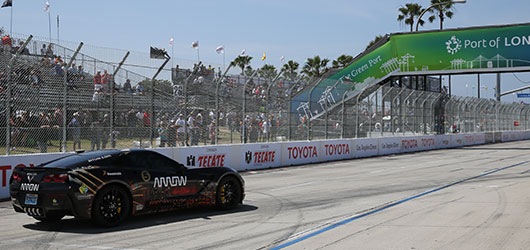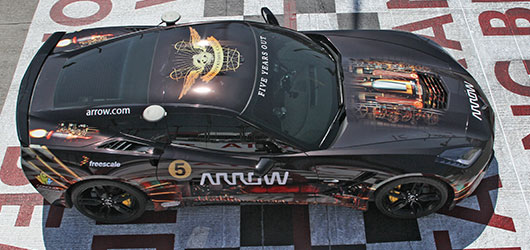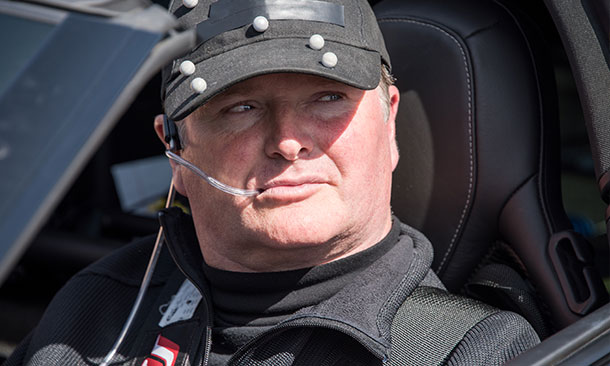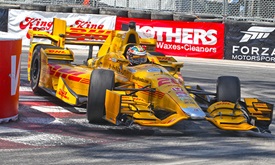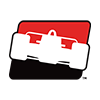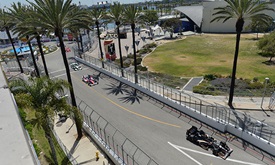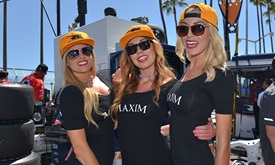Schmidt takes driving into the future at Long Beach
APR 19, 2015
LONG BEACH, Calif. – Sam Schmidt smiles a wry smile when asked if he intentionally squealed the Chevrolet Corvette C7 Stingray’s tires leaving pit lane at Auto Club Speedway.
Twenty years ago, it would have been a non-question. Today, knowing the history of Schmidt practice crash in 2000 that left the Indy car driver a quadriplegic, the question is, “He was driving?” Schmidt can hardly believe it himself.
The Verizon IndyCar Series and Indy Lights Presented by Cooper Tires team owner is participating in an initiative by Arrow Electronics that allows Schmidt to control the Corvette's steering, braking and acceleration. He debuted on the Indianapolis Motor Speedway oval last May, and modifications were implemented that allowed him to complete a lap on the 1.968-mile street circuit during pre-race for the Toyota Grand Prix of Long Beach.
“It’s basically a miracle to even be involved in the project,” Schmidt said. “It was sort of the honeymoon effect going to Indy and getting to 107 (mph); basically checking everything off the list. But that was a seven-month process to get there. Then it was a step back and say, ‘Hey, we want to keep going and take it to the next level,’ and clearly that was make the acceleration and deceleration more in control, more intuitive.
“Then how are we going to challenge ourselves, and the challenge is to go left and right in an instantaneous fashion.”
Noel Marshall, a mechanical engineer with Colorado-based Arrow Electronics and the SAM (Semi-Autonomous Motorcar) Project lead, said the team collected the data from Indianapolis and posed the same question.
“We were going left, which was a feat, but we wanted to do more,” she said. “We gave Sam full control of the steering, so he can do left and right turns that wasn’t available before. We also gave him direct control of the gas and brake. So instead of doing a head nod to get 10 mile an hour increments, he can now punch it if he wanted to. And he does.”
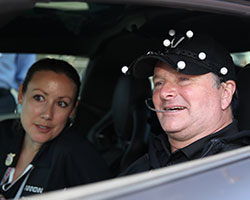 The steering system employs four infrared cameras mounted on the windshield that track the left-right movement of Schmidt’s head through reflective markers on the Schmidt Peterson Motorsports baseball cap he wears. The information is sent to the trunk-mounted main computer, which performs calculations to determine how the movements control the steering.
The steering system employs four infrared cameras mounted on the windshield that track the left-right movement of Schmidt’s head through reflective markers on the Schmidt Peterson Motorsports baseball cap he wears. The information is sent to the trunk-mounted main computer, which performs calculations to determine how the movements control the steering.
Controlling the acceleration and braking is accomplished through what Marshall refers to as “sip and puff” technology – sip on a straw to slow down/brake and puff to accelerate. Similar technology is used to help people maneuver in wheelchairs.
“It’s amazing to take technology that’s off the shelf and use it for a different purpose, and that purpose is to help the disabled become abled,” Marshall said. “This is very rewarding. This is a steppingstone for something else great to happen.”
The controls worked flawlessly on the 11-turn course and Schmidt was smiling broadly following the lap.
“The controls are just fantastic. Now I’m a little disappointed because I could have gotten to 150 (mph) at Indy if I had this,” Schmidt said. “The company, in essence, set out to prove a point with the SAM Project. There are serious applications in medical devices and transportation and mobility. We have a big initiative to get veterans back to work for better quality of life and this opens up that big time in a positive way.
“It’s great to be at such a historic venue as Long Beach. I came here for 15 years as a kid but never got to race here. I’m just happy to be a driver again.”
And what about the future? It’s another open-ended question. About two months ago, during an Arrow Electronics executive retreat, company CEO Michael Long said he will seek to get Schmidt a Nevada driver’s license by 2017.
“I don’t know if anyone want to be on the road with me, but OK,” Schmidt said.
